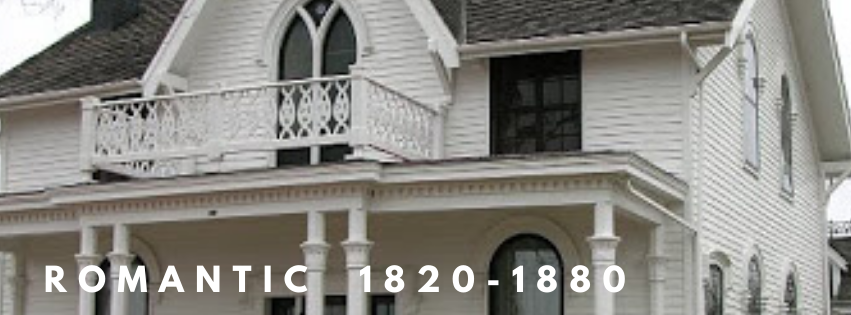The Romantic Style (1820-1880) of American houses came about as the country moved from the old colonial styles, reminiscent of the homes that early settlers had left, and turned to new architectural models. They chose styles that originated in ancient classical Greece for their inspiration. The Greek Revival style soon became a popular choice but were followed by styles based upon Italian Renaissance and later medieval Gothic styles
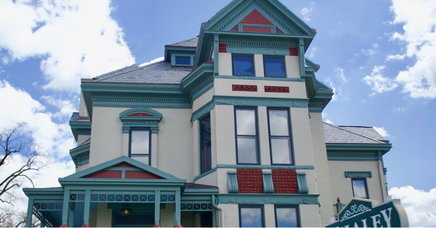
Greek Revival 1825- 1860
Greek Revival architecture took elements of classical Greek designs and used them in a wide variety of buildings in the New World. It became known as the National Style around the early 1800’s and as designers and builders adapted the style it picked up subtle regional differences along the way.
Where: New York, Pennsylvania. Ohio, Illinois, Virginia, Massachusetts. Indiana, Missouri, Tennessee, Alabama, Wisconsin, Georgia and all gulf coast states
Key features
Greek Revival architecture took elements of classical Greek designs and used them in a wide variety of buildings in the New World. It became known as the National Style around the early 1800’s and as designers and builders adapted the style it picked up subtle regional differences along the way.
Where: New York, Pennsylvania. Ohio, Illinois, Virginia, Massachusetts. Indiana, Missouri, Tennessee, Alabama, Wisconsin, Georgia and all gulf coast states
Key features
- Pedimented gable ends
- Roof low pitched gabled or hipped
- Symmetrical shape
- Heavy cornice embellished with a wide band of trim.
- Wide, plain frieze or trim
- Bold, simple mouldings
- Portico porch with columns
- Porch can be full height or smaller, sometimes the full width of the façade
- Decorative pilasters
- Narrow windows around front door
- 6-over-6 windows with pediments.
- Facade painted white to resemble white marble.
- Window surrounds less elaborate than doorways
- Windows are tall with sash
- Sometimes columns are round, square or octagonal
- Columns fluted or smooth, but were almost always made from wood.
- Entrance had a simple post-and-beam construction
- Entrances have elaborate door surrounds
- The door could be single or double, with one, two, or four panels
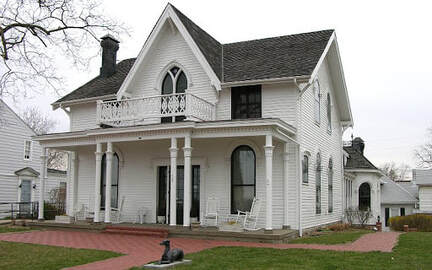
Gothic Revival 1840- 1880
Gothic Revival made its way from England to the U.S and is inspired by Medieval buildings in Europe. However, the style in the States is freshened up by the addition of colours, textures, and asymmetrical facades.
It was not so popular as the Greek or Italianate style, but nevertheless many houses were built in the early 1800s in what was referred to as Carpenter Gothic. The first American Gothic house was built in Baltimore, MD. in 1832.
Where: North Eastern US
Key features
Gothic Revival made its way from England to the U.S and is inspired by Medieval buildings in Europe. However, the style in the States is freshened up by the addition of colours, textures, and asymmetrical facades.
It was not so popular as the Greek or Italianate style, but nevertheless many houses were built in the early 1800s in what was referred to as Carpenter Gothic. The first American Gothic house was built in Baltimore, MD. in 1832.
Where: North Eastern US
Key features
- Asymmetrical floor plan sometimes L-shaped
- Wooden frame and construction or masonry
- Exterior usually covered with horizontal cladding
- Vertical board and batten exteriors are also found
- Steeply pitched cross gabled roof
- Roof sometimes central gable with side gable or hipped roof
- Occasionally have paired gables or front gable roofs
- Decorative crowns (drip mould) over windows and doors
- Grouped chimneys – several flues in one pot
- Pinnacles or small spires
- Leaded glass
- Quatrefoil and clover-shaped windows
- Oriel windows
- Arched or square gothic windows – with tracery
- Bay windows – full-scale also common at first floor level
- High dormers
- Parapets
- Decorative verge bargeboards, bargeboards and gables
- Gables often topped with finials or cross bracing
- Battlements and shaped parapets
- One storey porches in most homes
- Porches with turned posts or columns
- Doors commonly have pointed arches with decorative crowns
- Elaborate panelled doors are common
- Some doors can be elaborately panelled
- Castle-like towers with parapets on some high style buildings
- Carpenter Gothic buildings have distinctive board and batten vertical siding
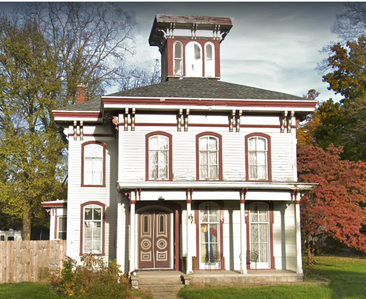
Italianate 1830 – 1890
This is an architectural style found in England and exported to America in the1830s where a more informal look was emphasised. The style originally derived from Italy’s rambling farmhouses, with square towers and informal detailing.
After- Gothic Revival - Italianate - Queen Anne
Where: Midwest and North-Eastern Seaboard
Key features
Wealthy homes – brick or stone
This is an architectural style found in England and exported to America in the1830s where a more informal look was emphasised. The style originally derived from Italy’s rambling farmhouses, with square towers and informal detailing.
After- Gothic Revival - Italianate - Queen Anne
Where: Midwest and North-Eastern Seaboard
Key features
- Two or three stories
- Flat or low-pitched roof with corniced eaves
- Most often symmetrical with nice balanced wings
- Hipped roof often with square tower or cupola
- Other roof styles include Centred, Asymmetrical or front gabled
- Asymmetrical roof styles do not have a tower
- Town houses have wide projecting cornices and flat roof
- Built using brick and wood clapboard
Wealthy homes – brick or stone
- Moderate to wide eaves with decorative bracket supports
- Double-door entryway most common, but single can be found
- Doors can be rectangular or arched
- Large panel of glass in the doors.
- Sometimes built with towers and cupolas
- Brick homes had elaborate, cast iron window and elaborate door hoods.
- Tall windows with curved or elaborate crowns
- Sash style windows, sometimes one-over-one or two-over-two glazing.
- Front porch columns were square post style with bevelled or chamfered corners.
- Recessed porches with arched openings
- Classical detailing in use of columns, quoins, pediments, arches, and pilasters
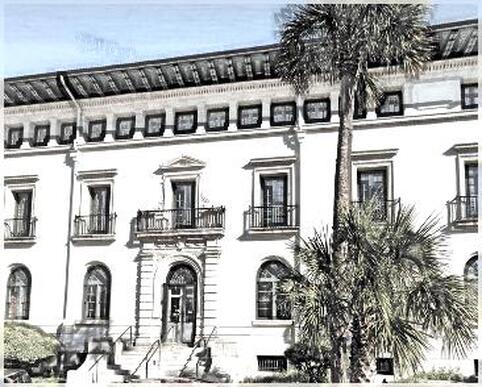
Renaissance Revivals 1840 - 1885
This style is neither Greek Revival nor Gothic Revival but a style which instead drew inspiration from a wide range of classicizing Italian modes.
Where: Various mainly Midwest and Northeastern Seaboard
Key features
This style is neither Greek Revival nor Gothic Revival but a style which instead drew inspiration from a wide range of classicizing Italian modes.
Where: Various mainly Midwest and Northeastern Seaboard
Key features
- Cube-shaped
- Balanced, symmetrical façade
- Smooth stone walls, made from finely-cut ashlar, or smooth stucco finish
- Low-pitched hip or Mansard roof
- Roof topped with balustrade
- Wide eaves with large brackets
- Horizontal stone banding between floors
- Segmental pediments
- Ornately-carved stone window trim varying in design at each story
- Smaller square windows on top floor
- Quoins (large stone blocks at the corners)
- Arched, recessed openings
- Full entablatures between floors
- Columns
- Ground floor made of rusticated stone with bevelled edges and deeply-recessed joints
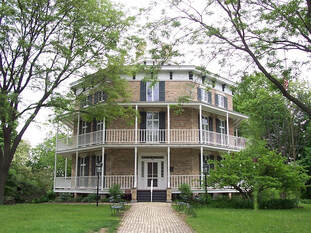
Octagon 1850 – 1870
The Octagon house was popular briefly in American during the Victorian period
If you have an Octagon (8 sided) house you will know it, so details designed to help you decide is unnecessary.
The Octagon house was popular briefly in American during the Victorian period
If you have an Octagon (8 sided) house you will know it, so details designed to help you decide is unnecessary.
